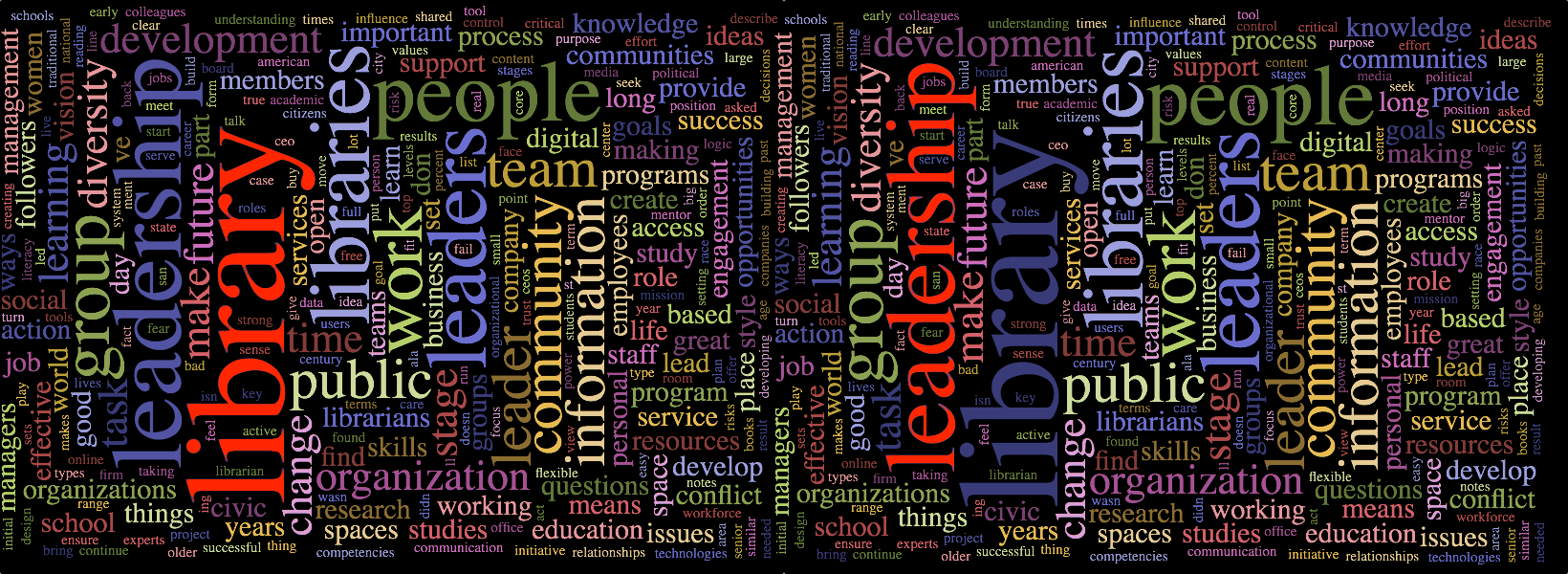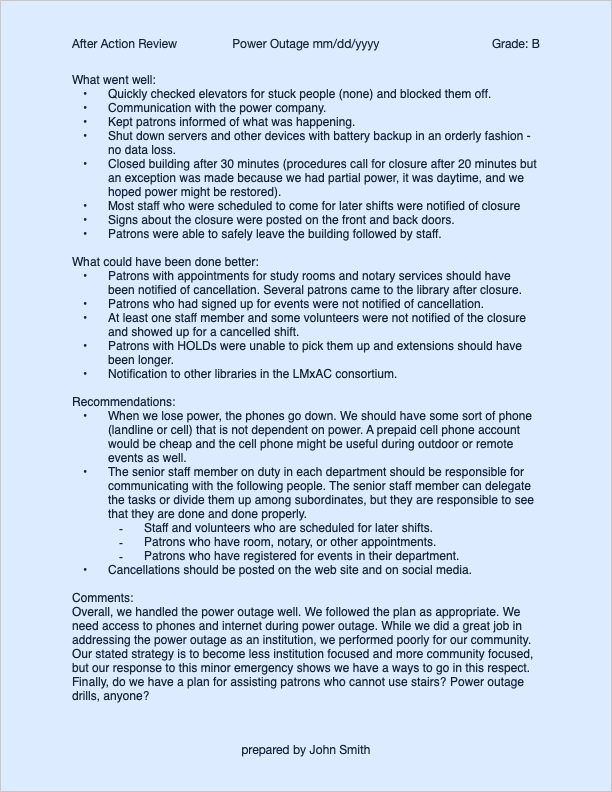For some, the following account about work related networking is boringly ordinary. For others, especially introverts, the mere idea of doing such things is terrifying. For still others, the activities seem obvious, until they try to network themselves – and then the required activities are suddenly intimidating. At one point or another in my life, I have fallen into each of those categories. Today, “the hunt” is still a nerve wracking process. I do not look forward to networking. However, like stage-fright, overcoming the fear is just another challenge that, in the end, heightens the sense of accomplishment.
I have the honor of being president of the Executive Board for the Omicron Chapter of Beta Phi Mu (BPMO). Beta Phi Mu is the international honor society for librarians and the Omicron Chapter is the chapter associated with Rutgers University’s Graduate School of Communication and Information where I got my Master of Information in Library and Information Science in 2022. BPMO is a small group and the Board raises money for scholarships, organizes events and activities, and recruits members from among the most promising students as they graduate.
The Board was preparing for BPMO’s Annual Meeting and we needed a speaker to draw a big turnout from our membership. Our mission is to bring in speakers and organize programs that are of strategic, even existential, importance to libraries. For this year’s meeting, the selected topic was “The Role of a Library When Its Community Faces a Crisis or Emergency.”
We chose the topic in part because we understood that a faculty member at Rutgers Graduate School of Communication and Information was interested in the subject and might be willing to talk about their research to our members – or would at least suggest an alternative speaker. Recruiting a speaker seemed like a straightforward process. Unfortunately, the faculty member did not respond to queries.
Since the easy solution for finding a speaker did not produce the desired result, it became necessary to dust off my rusty networking skills and put them to work. The best networking, of course, is done through people you already know who are also broadly connected. However, I don’t like to turn too often to the same trough because if you drink too often it runs dry. Therefore, I determined to search every way I could on my own before asking for help.
The first thing I did was a simple Google search for recently published articles on the subject by anyone. I immediately found a nice essay “Library Workers as First Responders” in Booklist about one person’s personal experience with a public library that responded well to the pandemic emergency, substantially raising his perception of libraries. While this essay underscored the value of libraries responding well to a crisis, the author was a library patron recounting his personal observations of a single instance, which is not an adequate basis for a substantive presentation to a professional audience.
I turned to American Library Association publications and found a promising article titled “Even in the Worst-Case Scenario.” The article appeared in Public Libraries Online in 2020, which made it recent enough to be relevant. In it, the authors assert,
“When crisis strikes, organizations can flounder: they may respond to the unexpected or unprecedented with fuzzy thinking, emotionally freighted reactions, or injudicious implementation of rehearsed or routine responses inappropriate to the situation…. Yet crises can also offer possibilities to learn, adapt, and renew the institution’s mission and value for the community it serves…. [W]hat can other communities’ crises teach us about the changing social role of libraries?”
The authors were speaking my language. The lead author is Matt Finch, who was, at the time he co-wrote the article, a research fellow at the University of Southern Queensland in Australia. I started with him. In the age of the internet, Australia is not that far away from New Jersey. Perhaps he could Zoom into our meeting or he might know someone who could speak on the same subject.
First, I had to locate his contact information. All I had was his university affiliation. I dug through the usual sources: LinkedIn, directories at his university, and Google. It took a couple of tries to find current contact information because Matt had moved to Oxford University in the meantime. Ultimately, I found his personal web site and used that to contact him.
His interests had shifted so, after a brief email exchange, he referred me to Zindzi Cresswell, who is also at Oxford and is specifically interested in disaster response by public institutions. So Zindzi and I Zoomed. The conversation was insightful and we commiserated on the subject, but we also agreed that someone who is both in the USA and working in the library field would probably suit BPMO’s needs better than someone in the UK. ZC offered to explore her network for me.
Being a good networker, I established LinkedIn connections with both Matt and Zindzi.
I also continued to look for additional options.
Remembering the story of the Ferguson, MO public library staying open during riots in 2014, I reached out to Ferguson Library director Scott Bonner. I was a little fearful that Scott might have moved on after 10 years. I also worried that he might be burned-out on public speaking, since librarians are not known for gregariousness. But you cannot second guess yourself when networking, so I decided to try.
Scouring the Ferguson Municipal Library’s web site, I found no current mention of Scott. Being a public institution, however, there was a phone number so I called and quickly got transferred to Scott. Scott was very nice and supportive of the topic, but he quickly confirmed my expectations about being burned out on the public speaking thing and declined the invitation. “I stopped doing that,” he said. As feared, dead end.
Next, I turned to the EBSCO database of journal articles that is available through the library. I was looking for any academic or professional discussion of libraries supporting their communities through crisis or emergency. EBSCO responds well to a well constructed boolean search, so I was confident I would find something.
Here I found references to the Los Angeles Public Library as part of a coordinated disaster response system that includes the LA Police Department, the LA Fire Department, and several other municipal and county organizations as well as the LA Public Library. A little more digging turned up a phone number for the office of the “City Librarian,” who is, apparently, the “top dog” in the 72 branch library.
I dialed the number and found myself talking to Loretta, a very nice assistant who listened attentively to what I had to say and asked excellent questions clarifying some points and confirming others – the perfect reference interview. She assured me that someone would call me back.
By this point, I was running low on time. I had started the search with almost two months until the meeting, but between work, family distractions (the good kind), and waiting for responses first from faculty and then from contacts around the globe, the process outlined above had taken about three weeks. The Board needed a speaker so we could send out a newsletter that included an announcement about the Annual Meeting. We also needed to send invitation emails to members to various constituencies and promote the event on social media. In short, although I had two irons in the fire thanks to Zindzi and Loretta, I could not afford to wait for replies that might not come.
Therefore, I took a deep breath and drank from the trough. I reached out to Doug, a rising star in NJ library circles who had been helpful in the past when looking for a speaker. Doug responded a few hours later with a couple of names and email addresses for people who might know someone who would be appropriate to our topic.
Generally, for initial contacts, I prefer email because it gives the recipient time to absorb the contact request, consider the question, and respond at their own convenience. However, given that (a) time was short, (b) phone calls are more personal than emails, and (c) it’s harder to ignore a phone call than an email, I decided to call the people on Doug’s list. It took a little digging through LinkedIn and organizational web sites, but I was able to chase down a phone number for the first person on the list.
As it turned out, I struck gold. This is the value of personal networking through high quality personal connections. The contact from Doug, named Michele, works at the NJ State Library and speaks specifically on the role of libraries in emergencies and crises. She trains library directors, library boards, and community leaders on how libraries can make a difference in an emergency, either sudden emergencies (eg: a hurricane) or systemic crisis (eg: poverty or opioid abuse). I reached Michele on the first try and we had a good conversation. She agreed to our proposed meeting date, time and other arrangements. In the end, everything came together quickly and smoothly.
Of course, I added Michele to my LinkedIn network as well.
Once I had a speaker arranged, I followed up with my other contacts and let them know where things stood so they would not waste time seeking introductions for me.
What are the networking principles I put to use for this search?
-
-
- Know exactly what you’re looking for. Whether it’s a person, a service, or a product, be able to narrowly and clearly define your desired outcome and explain it to other people.
- Look for people who closely fit your needs.
- You never know where leads will come from. Use whatever resources might be useful. Think outside the box.
- Don’t be afraid of the cold call. Be prepared to briefly introduce yourself, the reason for reaching out, and what you’re asking for. Most people respect that and will be flattered that you found them.
- Don’t be afraid to ask for names and contact information for other people who might be able to help with your search.
- Don’t be discouraged by dead ends. If one series of leads fails to bear fruit, try another.
- Pursue several options at the same time.
- Maintain your connections by following up. Don’t just ask for a favor and disappear. Be considerate and maintain that human connection.

